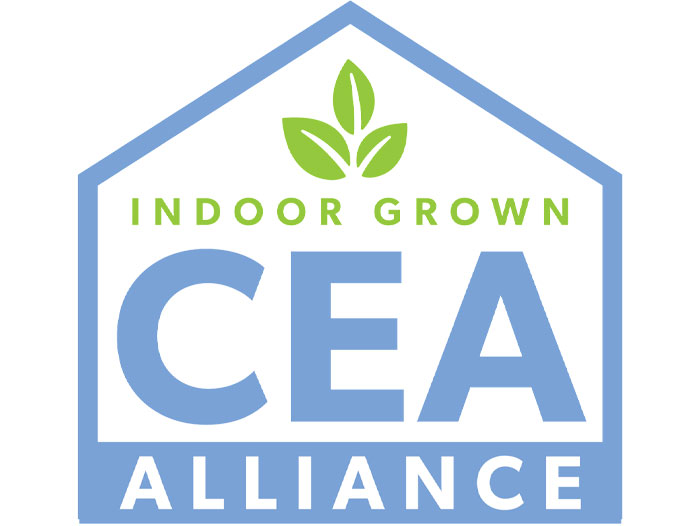CEA Alliance Releases Sustainability Framework for Indoor Growers
June 25, 2024 | 5 min to read
At the Indoor AgTech Innovation Summit, the CEA Alliance unveiled a groundbreaking sustainability framework created by and for indoor growers, promoting transparency and improvement through 60 standardized metrics across 20 key performance indicators. This initiative addresses critical sustainability metrics such as natural resource impact, waste generation, and food safety, reflecting the growing importance of controlled environment agriculture. By enabling accurate impact measurements, the framework aims to enhance the industry's credibility and support comprehensive sustainability efforts in food production.

Guide enables comprehensive CEA impact measurement and highlights gaps in field metrics
CHICAGO — At the Indoor AgTech Innovation Summit, the CEA Alliance released the industry’s first sustainability framework developed by indoor growers, for indoor growers. The framework will drive credibility, transparency and continuous improvement through standardized approaches for sustainability measurement, guiding indoor growers through both key impacts to measure and metrics for measuring them.
After a year of development by a producer working group and discussion with industry, retail, academia, government and NGO stakeholders, the new framework features 60 metrics supporting 20 Key Performance Indicators (KPIs) across a variety of environmental and social aspects of indoor growing, including:
● Natural resource and climate impacts
● Pesticide use
● Waste generation
● Food safety
● Employment practices
● Community engagement
● Food security impacts
“At a time when the U.S. is importing more fresh food than ever before, indoor farming can take a bite out of rising imports by helping to expand the year-round production and availability of fresh food,” said Colin O’Neil, Chair of the CEA Alliance’s Public Policy Working Group and Senior Director of Public Policy & Social Impact for Bowery. “We applaud Chairwoman Stabenow for reflectingimportant provisions from the Food Supply Chain Capacity and Resiliency Actand the Supporting Urban and Innovative Farming Act in the Rural Prosperity and Food Security Act and are grateful for Chairman Thompson’s continued focus on science, technology, and innovation ahead of the House Committee on Agriculture’s scheduled farm bill markup on May 23rd.”
“Indoor growing, sometimes called Controlled Environment Agriculture, offers unique value for producing food sustainably in their ability to grow climate-resilient food year-round in more communities with better control, efficiency, consistency and quality,” said CEA Alliance Executive Director Tom Stenzel. “The CEA Alliance believes an industry-led commitment to standardized measurement is important to achieving and understanding true value; that’s why we’ve proactively come together to develop these metrics. We hope this framework will support indoor growers at every stage of their sustainability journey, as well as encourage outdoor growers, packers and processors to include the entire supply chain from field to finished product in their measurement of impacts.”
Because indoor vertical farms and high-tech greenhouses have a greater ability to control their growing environment, producers are able to grow fresh produce in one location with more consistency and quality, year-round. That heightened control also enables more comprehensive measurement of key impact areas for sustainability, including carbon, water use, nutrient use efficiency and discharge, food loss and other attributes that are difficult to measure in field production.
“The ability to measure, optimize and improve impacts are a critical part of indoor agriculture’s value proposition for consumers, communities, the environment, and a more sustainable future for the food system overall,” Stenzel said. The metrics framework can be used by indoor growers as a data-driven way to assess and communicate key impacts that are material to indoor growers as well as broader ESG stakeholders; identify opportunities for improvement, and measure progress over time. Given the diverse and evolving nature of the innovative CEA industry, the framework was also designed to be simple, inclusive, flexible and outcomes-based, so any producer at any stage of growth or type of system can apply it to where they are on their sustainability journey.
The CEA Alliance developed a tailored sustainability framework for high-tech indoor farms because many existing frameworks for outdoor agriculture do not necessarily fit or holistically address the scope of CEA systems and impacts. Further, metrics and benchmarks for outdoor agriculture often do not account for all aspects of crop production that may be measurable in CEAs. The framework notes that, because impacts in outdoor production are often estimated or separated along lengthier supply chains, apples-to-apples comparisons of impacts with indoor farms are challenging.
For example, many prominent field metrics and benchmarks quantify water use with estimated irrigation volumes and may not include usage such as equipment washing, cooling, produce washing and processing, packing, etc. Because CEA operations typically encompass all of those aspects under one roof, they can more accurately and comprehensively measure water use across all stages of production. Such examples highlight the need for more comprehensive measurement to understand the complete impact of outdoor agriculture and enable true comparisons with indoor farms.
“On behalf of the industry, we are proud to be setting a new bar for measurement and transparency across a comprehensive set of sustainability outcomes,” said Dan Malech, Board Chair of the CEA Alliance and SVP Strategy & General Counsel at Plenty, a vertical farming technology provider and producer. “Transforming food system sustainability while increasing availability of fresh produce is at the core of our industry and what drives our innovation. By releasing this framework, we hope to further the dialogue across the entire fresh produce industry, regardless of production methodology, around how we can sustainably increase global produce production in a way that generates value for all stakeholders.”
The CEA Alliance’s full “Sustainability Framework for Controlled Environment Agriculture” can be viewed at ceaalliance.com/resources/.
The Controlled Environment Agriculture Alliance (CEA Alliance) is a membership trade association representing and serving vertical farms and greenhouse producers growing fruits and vegetables in a highly controlled indoor production environment. For more information, please contact Tom Stenzel, Executive Director, at Tom@CEAAlliance.com.
